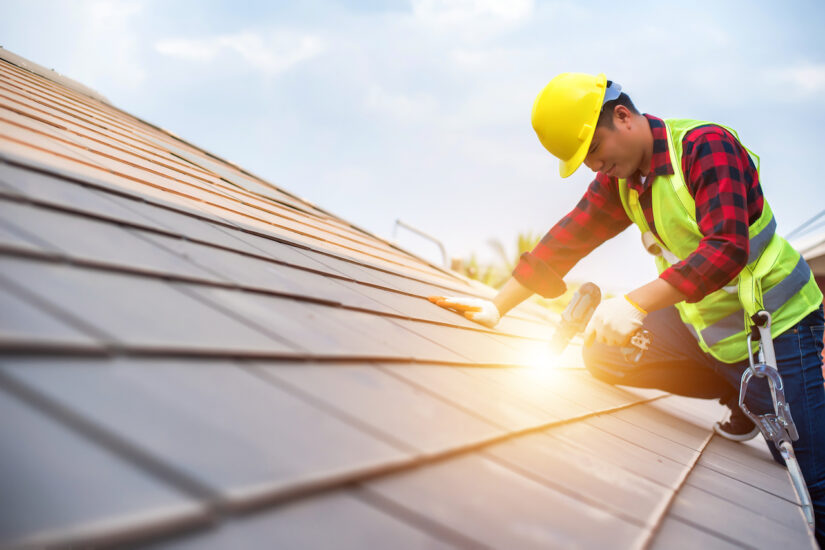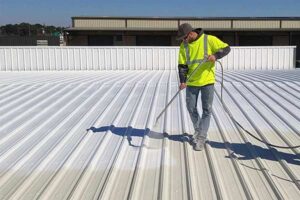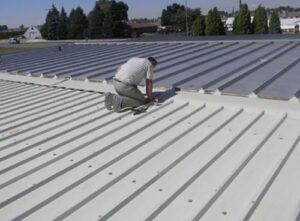Business
The Environmental Impact of Commercial Roof Restoration
Published
4 months agoon
By
Admin
Commercial roof restoration might not be the first thing that comes to mind when thinking about environmental impact, but it plays a crucial role in sustainable building practices. By choosing to restore rather than replace your roof, you can significantly reduce waste and energy consumption. This article explores the environmental benefits of commercial roof restoration and how it contributes to a greener planet.
Understanding Roof Restoration
What is Commercial Roof Restoration?
Commercial roof restoration involves repairing and rejuvenating an existing roof rather than replacing it. This process typically includes cleaning, repairing damaged sections, and applying protective coatings to extend the roof’s life. Unlike a full replacement, restoration focuses on maintaining and enhancing the current structure.
Common Methods of Roof Restoration

Roof restoration methods vary based on the type of roofing material and the extent of damage. Common techniques include pressure washing, minor repairs, and applying sealants or coatings. These methods aim to restore the roof’s functionality and appearance while minimising the need for new materials.
Environmental Benefits of Roof Restoration
Reducing Waste
One of the most significant environmental benefits of roof restoration is waste reduction. Instead of sending old roofing materials to landfills, restoration allows you to reuse and enhance your existing roof. This approach minimises the environmental impact associated with disposal and the production of new roofing materials.
Energy Efficiency
Restoring your commercial roof can improve its energy efficiency by enhancing insulation and applying reflective coatings. These upgrades help maintain indoor temperatures, reducing the need for heating and cooling. Consequently, you’ll see lower energy bills and a smaller carbon footprint.
Extending Roof Life
Roof restoration can significantly extend the life of your roof. By addressing minor issues before they become major problems, you avoid the environmental impact of a full roof replacement. A well-maintained roof also reduces the frequency of repairs and replacements, leading to less waste over time.
Waste Management
Minimising Waste Through Restoration
Roof restoration minimises waste by making the most of existing materials. Instead of discarding old roofing materials, restoration techniques repair and reuse them. This approach not only conserves resources but also reduces the environmental impact of waste disposal.
Recyclable Materials
Many roofing materials used in restoration are recyclable. For instance, metal and certain types of shingles can be recycled at the end of their life cycle. Choosing recyclable materials for your roof restoration project further enhances its environmental benefits.
Energy Efficiency and Conservation
Insulation Improvement
One of the key aspects of roof restoration is improving insulation. By enhancing your roof’s insulation, you reduce the amount of heat escaping from your commercial building in winter and keep it cooler in summer. This leads to lower energy consumption for heating and cooling.
Reflective Coatings and Their Impact
Reflective coatings applied during roof restoration can significantly impact energy efficiency. These coatings reflect sunlight away from the roof, reducing heat absorption and keeping indoor temperatures more stable. This not only lowers energy bills but also reduces the urban heat island effect.
Lowering Energy Bills
By improving insulation and applying reflective coatings, roof restoration can lead to substantial savings on energy bills. Lower energy consumption not only benefits your wallet but also reduces the overall environmental impact of your commercial building.
Roof Restoration and Urban Heat Islands

The Concept of Urban Heat Islands
Urban heat islands occur when urban areas experience higher temperatures than their rural surroundings due to human activities and modifications to land surfaces. Roofs that absorb and retain heat contribute to this phenomenon, leading to higher energy consumption and elevated temperatures.
How Restoration Can Mitigate Heat Effects
Roof restoration can help mitigate the urban heat island effect by improving the reflectivity of your roof. Reflective coatings and lighter-colored roofing materials reduce heat absorption, thereby lowering surrounding temperatures and contributing to a cooler urban environment.
Sustainable Materials Used in Roof Restoration
Eco-Friendly Roofing Materials
Several eco-friendly materials are available for roof restoration, including recycled metal, reclaimed wood, and cool roofing materials. These options not only reduce environmental impact but also offer durability and energy efficiency.
Benefits of Sustainable Materials
Using sustainable materials in roof restoration reduces the need for virgin resources and lowers the carbon footprint of your project. These materials often have longer lifespans and better energy performance, providing both environmental and economic benefits.
Comparing Roof Restoration with Replacement
Environmental Impact of Replacement vs. Restoration
When comparing roof restoration with replacement, restoration typically has a lower environmental impact. Replacement involves removing old materials and installing new ones, which generates significant waste and requires additional resources. Restoration, on the other hand, focuses on enhancing existing materials and minimising waste.
Cost Considerations
While the initial cost of roof restoration might be lower than replacement, the long-term benefits and savings on energy bills can make it a more cost-effective option. Additionally, the reduced environmental impact of restoration contributes to overall sustainability.
Future Trends in Roof Restoration
Innovations in Roofing Technology
The future of roof restoration is likely to see advancements in technology, including more efficient materials and techniques. Innovations in roofing technology will continue to improve the environmental impact of restoration projects.
The Role of Policy and Regulation
Policy and regulation play a crucial role in promoting sustainable practices in roof restoration. Future developments in building codes and environmental standards will further influence the environmental benefits of roof restoration.
Conclusion
Roof restoration offers a range of environmental benefits, from reducing waste to improving energy efficiency. By choosing to restore rather than replace your roof, you contribute to a more sustainable future. Consider the advantages of restoration for your next roofing project and make a positive impact on the environment.
You may like

What Are Local Citations?

The Ultimate Guide to Slot88: Your Path to Winning Big

Efficient ACA Compliance Management with ACA-Track

Key Software Systems: Future-Proofing Courier Operations with Technology

Refrigerated Trailers: Benefits and Uses

100 Dynamic Duos: Legendary Pairings That Transcend Time
ARK: Survival Evolved Game Icons and Banners

cute:i1cdycptg50= drawings

Understanding New York Sports Club Membership: What It Offers and What Affects the Cost

Safety Tips for Compressed Air Dryers

How can online food delivery sales increase and attract the maximum number of customers in 2023?

MEP BIM: Revolutionizing Building Infrastructure Design

Revolutionizing Industries with ChatGPT

Resolving the Israeli-Palestinian Conflict: A Comprehensive Analysis

Skillful Passion: Wisconsin’s Dominant Volleyball Team

Virtual Reality Rental: A Futuristic Experience

Unlocking the Potential of cryptonewzhub.com Internet

Negin Behazin vs Dignity Health: Comprehensive Comparison

iPhone 14 Pro Max: Unveiling the Next Level Innovation

Unraveling the Mystery: Robert Card’s Tragic Passing

What Are Local Citations?

The Ultimate Guide to Slot88: Your Path to Winning Big

Efficient ACA Compliance Management with ACA-Track

Key Software Systems: Future-Proofing Courier Operations with Technology

Refrigerated Trailers: Benefits and Uses

100 Dynamic Duos: Legendary Pairings That Transcend Time
ARK: Survival Evolved Game Icons and Banners

cute:i1cdycptg50= drawings

Understanding New York Sports Club Membership: What It Offers and What Affects the Cost

